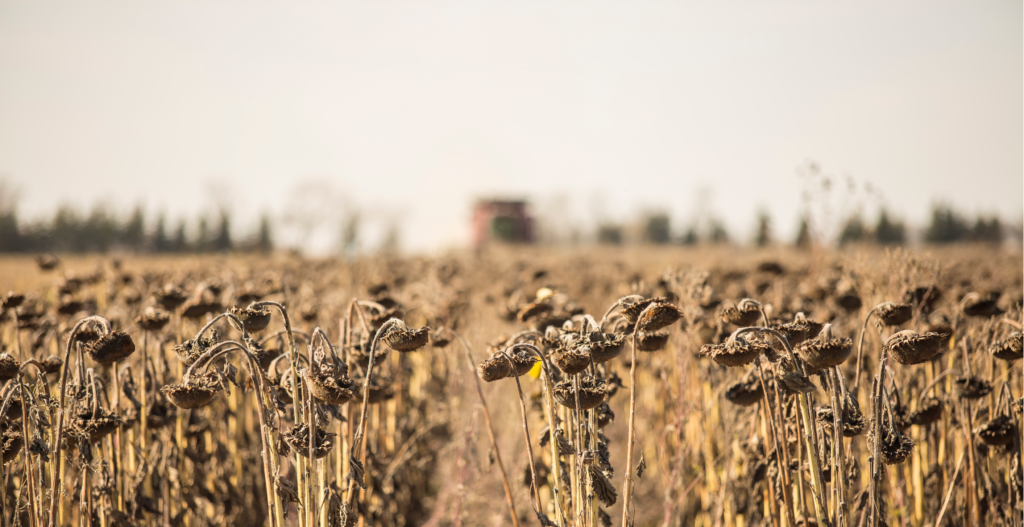
Maturity and dry down sometimes go hand in hand and sometimes not, says Nuseed’s sunflower technical agronomist, Alison Pokrzywinski. An early-season hybrid with good late-season plant health or stay green trait is not necessarily going to have good dry down. And a fuller-season hybrid that doesn’t necessarily have good late-season plant health could dry down really well.
Blackbird depredation and damage is quickly becoming a serious problem in areas of North Dakota. Recently areas around Bottineau, Crosby, Max and north of Minot have been hardest hit. “That whole area, it’s a big triangle, has really been hit by blackbirds,” says Pokrzywinski. “It’s an ongoing battle, with no single fix.”

This is where desiccation can be important, says Pokrzywinski. “An earlier hybrid with good late-season plant health may not look like it’s ready, but all the indicators are there [for maturity], and you can go in and desiccate. However, if you wait for Mother Nature, it could take a while.”
Natural sunflower dry down can be slow and uneven. Desiccants decrease losses due to inclement weather, lodging and bird depredation by speeding up the dry-down process.
However, desiccation is not for everybody and it’s not for every farm, adds Pokrzywinski. For example, growers in central or South Dakota, who plant around June 20, likely aren’t going to desiccate—by the time the crop is mature enough for desiccation, fall has set in and the temperatures are much cooler, or it’s close to a killing frost.
Nevertheless, Pokrzywinski says she believes desiccation is underutilized by growers. “Sunflowers can get hit by a lot of issues in the fall, whether it’s disease, blackbirds, wind or rain. Growers need to consider the maturity of their crops and how far from harvest they would be if they don’t desiccate.”
Pre-Harvest Desiccation Checklist
-
-
- Get the crop off early by applying a desiccant. Natural sunflower dry down can be slow and uneven. By speeding up the dry-down process, chemical desiccants decrease crop losses due to inclement weather, lodging, disease and bird depredation
- Desiccants can be applied to the crop once plants have reached physiological maturity. At this point, seed moisture is about 35 percent, the backs of the heads turn yellow, and bracts turn brown in color (R-9 stage). Applying desiccant before this stage may reduce test weight and seed quality. Remember to check local regulations for approved desiccants

For sunflower crops planted early in the growing season, that crop may be mature by the end of August. In this case, desiccation is advantageous for growers because the crop can be harvested early and put in the bin before the elements or blackbirds decrease yield. Waiting for a crop like this to dry down naturally, or for a killing frost, may take a long time, during which the sunflowers are vulnerable. “Sometimes growers are waiting until October or November for a hard frost to kill off the plants,” says Pokrzywinski.
Additionally, desiccation would be advantageous for those growers experiencing late-season stalk disease in their crop. Getting the crop off as soon as possible prevents further stalk damage.
Growers who desiccate also have more control over harvest timing, and desiccation also helps even out moisture levels before harvesting. “If you plant on the earlier side, you should automatically put desiccation into your budget,” she says.
VIDEO: Sunflower Desiccation Timing – Jed Wall, Sunflower Business Development Manager of Legend Seeds (Nuseed’s Official Sunflower Distributor)


-



